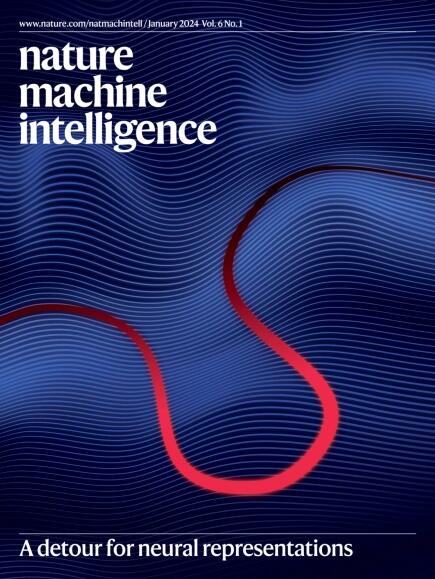掩模先验引导下的去噪扩散改善了蛋白质逆向折叠
IF 23.9
1区 计算机科学
Q1 COMPUTER SCIENCE, ARTIFICIAL INTELLIGENCE
引用次数: 0
摘要
反向蛋白质折叠产生有效的氨基酸序列,可以折叠成所需的蛋白质结构,最近的深度学习进展显示出强大的潜力和竞争性能。然而,挑战仍然存在,例如预测具有高度结构不确定性的元素,包括无序区域。为了解决这种低置信度的残基预测问题,我们提出了一个掩模先验引导的去噪扩散(MapDiff)框架,该框架可以准确捕获蛋白质反向折叠的结构信息和残基相互作用。MapDiff是一个离散扩散概率模型,迭代生成具有低噪声的氨基酸序列,以给定的蛋白质主链为条件。为了结合结构信息和残基相互作用,我们开发了一个基于图的去噪网络,并采用了掩模先验预训练策略。此外,在生成过程中,我们将去噪扩散隐式模型与蒙特卡罗dropout相结合,以减少不确定性。对四个具有挑战性的序列设计基准的评估表明,MapDiff实质上优于最先进的方法。此外,MapDiff生成的计算机序列与不同蛋白质家族和结构的天然蛋白质的物理化学和结构特征非常相似。本文章由计算机程序翻译,如有差异,请以英文原文为准。


Mask-prior-guided denoising diffusion improves inverse protein folding
Inverse protein folding generates valid amino acid sequences that can fold into a desired protein structure, with recent deep learning advances showing strong potential and competitive performance. However, challenges remain, such as predicting elements with high structural uncertainty, including disordered regions. To tackle such low-confidence residue prediction, we propose a mask-prior-guided denoising diffusion (MapDiff) framework that accurately captures both structural information and residue interactions for inverse protein folding. MapDiff is a discrete diffusion probabilistic model that iteratively generates amino acid sequences with reduced noise, conditioned on a given protein backbone. To incorporate structural information and residue interactions, we have developed a graph-based denoising network with a mask-prior pretraining strategy. Moreover, in the generative process, we combine the denoising diffusion implicit model with Monte-Carlo dropout to reduce uncertainty. Evaluation on four challenging sequence design benchmarks shows that MapDiff substantially outperforms state-of-the-art methods. Furthermore, the in silico sequences generated by MapDiff closely resemble the physico-chemical and structural characteristics of native proteins across different protein families and architectures. Bai and colleagues present MapDiff, a discrete diffusion-based framework for generating amino acid sequences conditioned on a target protein structure, with strong performance in predicting uncertain regions and achieving high in silico foldability.
求助全文
通过发布文献求助,成功后即可免费获取论文全文。
去求助
来源期刊

Nature Machine Intelligence
Multiple-
CiteScore
36.90
自引率
2.10%
发文量
127
期刊介绍:
Nature Machine Intelligence is a distinguished publication that presents original research and reviews on various topics in machine learning, robotics, and AI. Our focus extends beyond these fields, exploring their profound impact on other scientific disciplines, as well as societal and industrial aspects. We recognize limitless possibilities wherein machine intelligence can augment human capabilities and knowledge in domains like scientific exploration, healthcare, medical diagnostics, and the creation of safe and sustainable cities, transportation, and agriculture. Simultaneously, we acknowledge the emergence of ethical, social, and legal concerns due to the rapid pace of advancements.
To foster interdisciplinary discussions on these far-reaching implications, Nature Machine Intelligence serves as a platform for dialogue facilitated through Comments, News Features, News & Views articles, and Correspondence. Our goal is to encourage a comprehensive examination of these subjects.
Similar to all Nature-branded journals, Nature Machine Intelligence operates under the guidance of a team of skilled editors. We adhere to a fair and rigorous peer-review process, ensuring high standards of copy-editing and production, swift publication, and editorial independence.
 求助内容:
求助内容: 应助结果提醒方式:
应助结果提醒方式:


